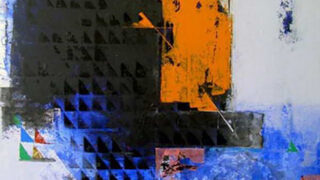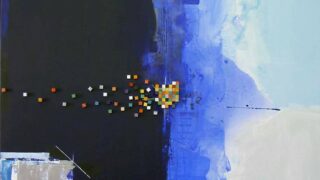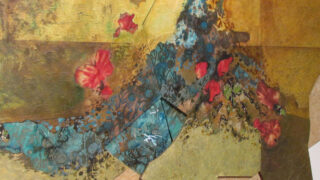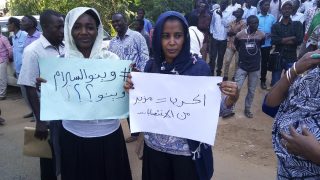
This publication has benefited from the support of the Rosa Luxemburg Foundation. This text may be reproduced in part or in full, provided the source is acknowledged.
Despite the separation of South Sudan, which carried with it more than two-thirds of the known oil reserves in Sudan and more than 70 percent of the country’s forest cover, the area of arable land in Sudan was not much affected. This area was within 200 million feddans (one feddan equals 4200 square meters) before the separation, and it decreased to 170 million feddans. This means that one of the countries’ basic resources, represented in this land, was not affected by the political and economic earthquake that ensued from the separation. This area also constitutes 40 percent of the arable land in the entire Arab region. Moreover, the area of the land that is actually exploited in Sudan ranges between 35 and 37 million feddans in rain-fed agriculture alone, with more than 3 million feddans in irrigated agricultural land, which indicates the amount of the large resources that can be benefited from, especially since there are seven highly populated neighboring countries with a growing need for food.
On the other hand, the absence of a vision and political will, together with the conflicting governmental decisions, deprived agriculture from occupying the position it deserves in Sudan, a country rich in its natural resources of land and water. Even when financial resources became available in Sudan - due to the decade-long rise in oil production revenues, leading to the flow of hard currency of about 35 billion dollars, which was the largest amount to enter the State treasury in Sudanese history - they were not exploited to support the agricultural and livestock sector, which the state propaganda refers to as the “Sudan’s permanent oil”. Neither was that money exploited in infrastructure projects, such as building canals, reclaiming land for agricultural use, supplying seeds and agricultural machinery, in addition to building slaughterhouses and providing veterinary services.
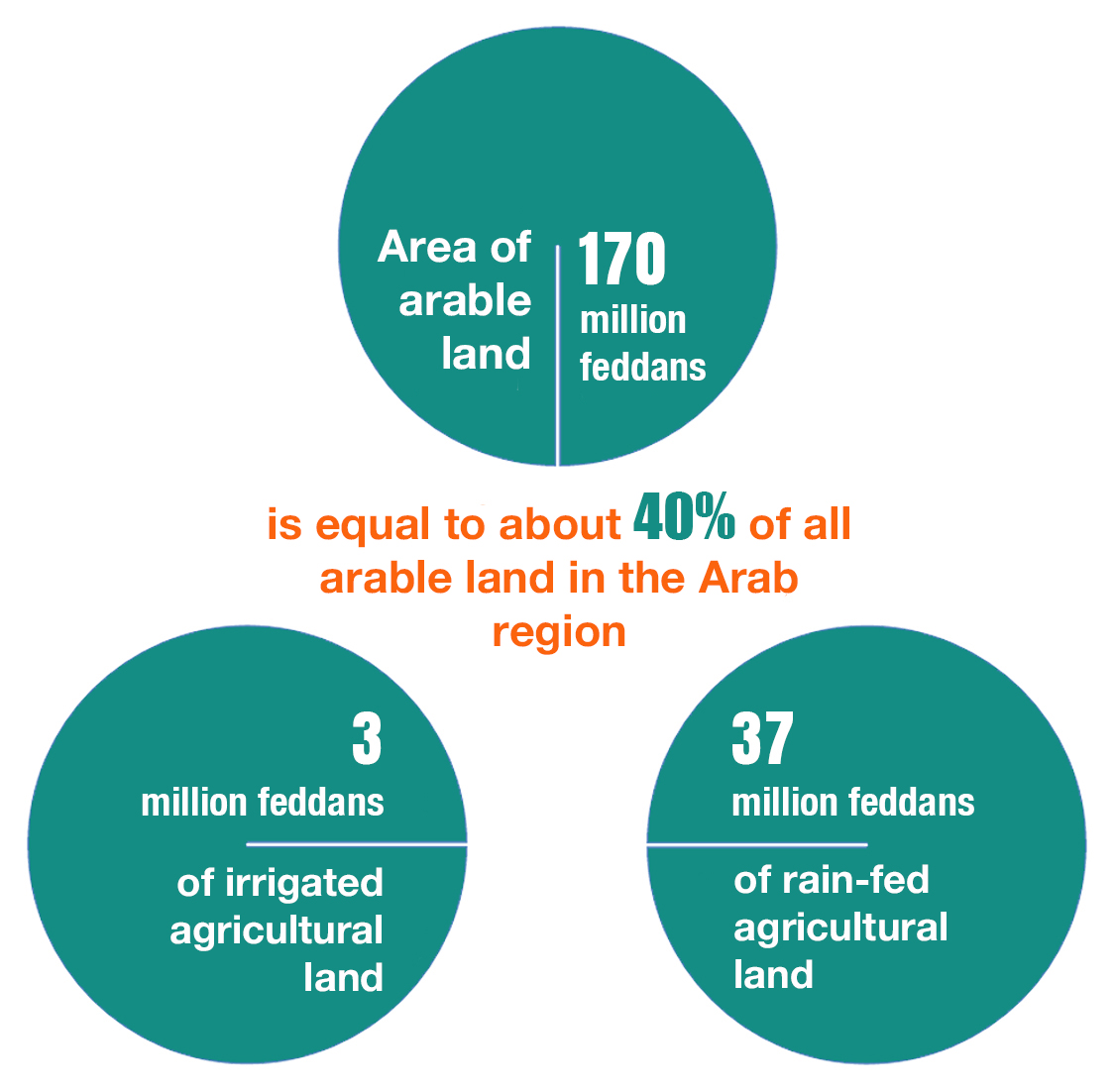
The figures reveal an indifference towards this renewable resource and a focus, instead, on a rentier economy. During the ten-year period when oil exports began, and until 1999, the average annual growth rate in the agricultural sector declined from 10.8 percent to 3.6 percent.
The declining interest in the agricultural sector led to an increase in the import of food, which nearly reached one-third of the value of the total imports estimated at around ten billion dollars. On the other hand, the country’s hard currency revenues declined because the oil produced from the wells in South Sudan was exported to cover more than 75 percent of the amount of those revenues and around 45 percent of the general financing that is available to the state. Accordingly, the phenomenon of the growth of food imports coincided with a deficiency in hard currency through the loss of about 300 million dollars per month, which used to be pumped to the public treasury from oil exports. Instead, it was spent on buying political loyalties as well as on security rather than being allocated to the productive sectors, especially agriculture. This contributed to widening the gap in the trade balance to six billion dollars, leading to severe pressure on the national currency and driving the government to gradually devaluate it, aggravating the situation, especially with the inflation reaching 70 percent.
Land legislation
Sudan’s huge natural resources drew the attention of British colonialism. And since land is the main element deciding how these resources are to be exploited, the British issued laws making every land that did not have an official registration “government land”. This was emphasized in the Land Act of 1970 and the Civil Transaction Act of 1984. Its essence remains the same, it being keeping the state’s tight control on land and sometimes at the expense of the local population groups. This will have had its repercussions in fueling some tribal and ethnic conflicts through government practices in the various successive eras since independence.

During the Second World War, the British recognized the significance of Sudan in providing some food to the allied soldiers who were facing the Axis forces represented by Italy in the east. Thus, they focused on the production of grains, namely corn, in the rain-fed farms within Al-Qadarif areas, east of Sudan, in an experiment that was supposed to be terminated at the end of the war. However, some Sudanese agricultural inspectors who worked in the region and knew its potential decided, on the eve of independence in 1955, to continue to agriculturally exploit the area and open it to interested businessmen. This was considered the origin of the idea of mechanized agriculture, which was supported by the World Bank through a series of financed projects in Sudan. These projects expanded in the areas of Al-Qadarif and later stretched west to Kordofan.
However, as time passed, and over decades of practice, the negative aspects of mechanized farming became apparent through certain phenomena, mainly represented in the process of giving licenses to acquire land and convert it into farms, in which social and political connections played a role, especially those of high-ranking officials, army, and police officers. Since most of those people came from distant regions, especially from northern and central Sudan, and as their stay in the region was temporary, their investments were mostly either on short or intermediate terms. During those periods of their stay, they sought to achieve the maximum profit possible, moving to another land after they have completely exhausted the first.
Sudan’s huge natural resources drew the attention of British colonialism. Since land was the main element determining how these resources are to be exploited, the British issued laws making every unregistered land “government land”. This was emphasized in the Land Act of 1970 and the Civil Transaction Act of 1984, which keep the state’s grip tight on land.
The uprooting of some local populations from the land which provided their livelihood and granting the land to investors from outside the region have given the land issue political, economic, and social dimensions. This manifested the “center-periphery conflict” and was accompanied by negative environmental and ecological effects that contributed to impoverishing larger groups of the population.
Secondly, some local population groups were being uprooted from the land that provided their livelihood. The land was given, instead, to investors from outside the region, due to the laws that require documents that prove ownership, the lack of concern for the traditional rights of the tribes and local communities, the economic weakness of the latter, and the inability of many to pay fees for acquiring land, in addition to the state’s right to have control over this land. This situation polarized more people to join the Sudan People’s Liberation Movement (SPLM), which started a rebellion in the south of the country and was able to open a new front, namely in the Nuba Mountains region.
These practices contributed to giving the land issue political, economic, and social dimensions and helped in the manifestation of the statement “center-periphery conflict”. In addition, the growing negative effects of these practices, environmentally and ecologically, helped impoverish larger groups of the population and drove them to emigrate from the countryside to the city. It can be noted that the Nuba Mountains which constituted, on the one hand, one of the regions of mechanized farming, became, on the other hand, and at the same time, a fertile field for opening a second front for the rebellion that began in Southern Sudan in its second edition in 1983, as developed by the late John Garang in his program entitled “A New Sudan.”
Although the peace treaty that is known by the name of the Kenyan Niavasha Resort, which ended the two-decade civil war in 2005, had laid the foundation for a democratic transition, it did not, with respect to land issues, address people’s traditional rights and how to develop them through a legislation that has been politically agreed on. What was also surprising was the fact that the Land Commission that the agreement provided for was never actually established.
The bread basket
The first real opportunity to exploit Sudan’s huge natural resources appeared during the presidency of former President Jaafar Nimeiri in the early seventies as a result of internal and external developments. At the top of the internal developments was the Nimeiri regime’s abandonment, at that time, of the leftist policies that had ensued at the beginning of his term through the processes of nationalization and confiscation. Most importantly, he reached an agreement with the rebels in southern Sudan in 1972, thus ending 16 years of civil strife, which brought about a measure of stability for the country. This coincided with external developments, mainly the Arab-Israeli October War of 1973, which was accompanied by an oil embargo that contributed to strengthening nationalist sentiments on the one hand and benefiting from a part of the oil surpluses that were available to invest in operations of a domestic dimension on the other hand. All these events crystallized in the slogan “Sudan is the bread basket of the Arab world,” as Arab funds sought to finance many projects in various fields, especially in infrastructure. The Kenana Sugar Project for sugar production, which was funded by Arab countries through a partnership between Sudan and the Gulf states, was considered the most successful model for this policy.
The figures reveal an indifference towards this renewable resource and focus instead on the rentier economy. During the ten-year period, when oil exports began, and until 1999, the average annual growth rate in the agricultural sector declined from 10.8 percent to 3.6 percent.
The final outcome of the idea of turning Sudan into the “bread basket” of the Arab world seems modest, as the total Arab sums that were invested did not exceed 800 million dollars at that time. In addition, the fact that many Arab institutions that were entrusted to implement this strategy found themselves shackled with many bureaucratic restrictions and Arab-Arab conflicts did not make things easier. This fact drove these institutions to focus on investing their capital in cash investment deposits that afford rapid profits rather than exploiting them in productive projects of uncertain proceeds due to the projects’ long duration as well as many other obstacles.
There were other factors related mainly to the structure of the Nimeiri regime being a one man-regime, which entailed the weaknesses of the state apparatus, the emergence of hotbeds of corruption, the lack of prioritization, economic deterioration, and slipping into the traps of the International Monetary Fund (IMF), known for its readymade prescriptions of devaluing the currency, limiting public spending, as well as lifting subsidies on commodities. All these factors aggravated the economic crisis and transformed it into a political one with the outbreak of the rebellion in South Sudan that eventually led to the overthrow of the Nimeiri regime in April 1985.
The popular uprising that overthrew Nimeiri culminated in the return of the multi-party and parliamentary experience. But its political and economic performance was very weak, especially in light of the continuity of the rebellion and the failure to achieve peace. This paved the way for the third military coup led by Brigadier General Omar al-Bashir four years after the overthrow of the former military regime.
Al-Bashir's coup was far from ordinary. It wore the “ideological hat” of the National Islamic Front (NIF) with its international Islamist program. This created a challenge to the two closest, neighboring countries to Sudan, Egypt to the north, and Saudi Arabia to the east. It also led to stronger relationships between the new Sudanese regime and Iran, a fact that worried both Cairo and Riyadh and increased the tension between Sudan and the two countries.
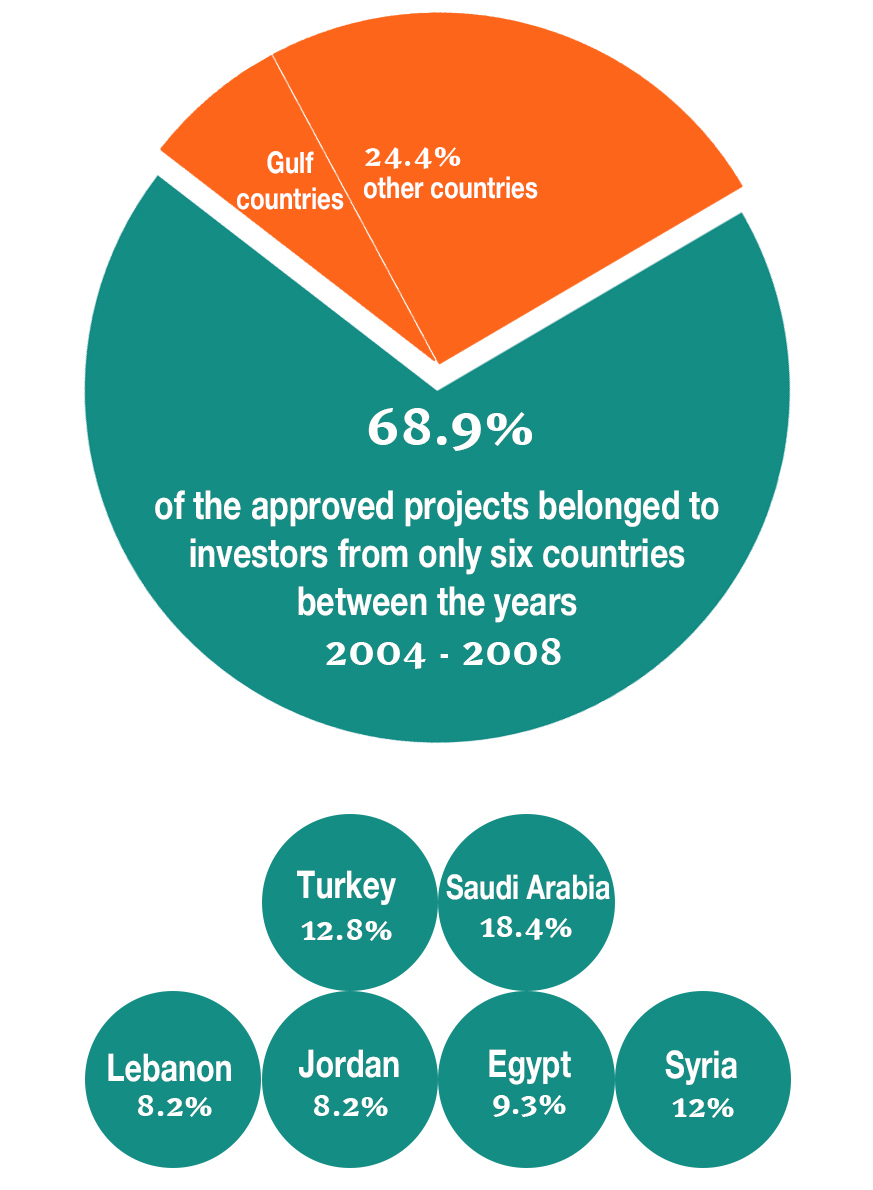
Despite the lack of accurate information on Arab and Gulf investments in the agricultural field in Sudan, the available figures give a clear idea about the state of affairs. Some of these figures show that in the period between 2004 and 2008, two-thirds of all approved projects belonged to investors from six countries: Saudi Arabia had 18.4%, Turkey 12.8%, Syria 12%, Egypt 9.3%, Jordan 8.2%, and Lebanon 8.2%, while the rest of the Gulf States had a share of 6.7%. According to official figures, the total number of projects executed between 2000 and 2010 reached 505 projects. However, no details about the impact of these projects on the general economic situation were given.
Attention and controversy
Among the projects that drew attention and some controversy was the Upper Atbara and Setit Dam. Located 460 km from the capital, Khartoum, the project covers areas of Kassala and Gedaref States that reach one million feddans. This project was allocated to Saudi Arabia as part of its strategy to have direct control of some natural resources to secure some of its food imports. Riyadh committed itself to invest a little more than one billion dollars to build a reservoir so that it could reduce the silt accumulated in the Khashm al-Girba reservoir which is located 80 kilometers to the north of the project, store water for the benefit of the state of Gedaref, and increase the overall agricultural area. The dam took about seven years build and began to function in 2017 after the completion of its operational capacity of 3.6 billion cubic meters. According to some social studies, the dam project of the Upper Atbara and Setit Rivers affected 155,000 small farmers and shepherds who were neither consulted nor considered when the project was planned. It was not thought how to economically accommodate the farmers- not even in the eleven villages that were built to be their new residences.
Other projects include the Al-Rajhi Project in the Nile and Northern States and the Emirati Amtaar Project. The first occupied an area of 300,000 feddans at the bend of the Nile in the Northern State. The project began with planting 7,000 feddans of wheat as an experiment of a wheat plantation, in addition to 2,000 feddans of seeds as part of the reclamation of the first stage of an area of 100,000 feddans, using 54 irrigation axes depending on the groundwater in that area, which was planned to reach to 250 axes by the end of last year. The experiment achieved remarkable success by producing about 30 Jwals (a Jwal is a common unit of measurement in Sudan, which, like the quintal, is equivalent to 100 kg) per feddan. This is considered a record number compared to the dominant rates in Sudan, which ranged between 8 and 10 Jwals.
The dam project of the upper Atbara and Setit Rivers was allocated to Saudi Arabia with an area of one million feddans. This project affected the conditions of 155,000 small farmers and shepherds who were neither consulted nor considered when the project was planned. It was not thought how to economically accommodate the farmers- not even in the eleven villages that were built to be their new residences.
Most of these projects have a total lack of transparency. The Upper Atbara and Setit Rivers’ Project, which was funded by Saudi Arabia, was submitted to the Parliament for approval since it includes leasing the land for 99 years. However, in a secret meeting, the deputies were pressured to pass the draft law as it is.
As for the project of the Emirati Company, Amtaar, it established a partnership with the Sudanese government with 60% for the Emirates and 40% for the government of Sudan. The company obtained a license to work in 2005 in an area of 130,000 feddans. It started with the reclamation of 20,000 feddans out of this land for cultivating and importing fodder to the Emirates in an amount that exceeded 300,000 tons annually. Besides, it obtained the approval of three other projects in the neighboring State of Nile River to the north, including fattening 8 million calves, planting 240 million palm trees, and launching a project for ten productive villages that could reach two thousand villages at the end of the program. However, the project of planting palm trees received a hard blow two years ago when 20 thousand palm seedlings were exterminated due to an infection that would have harmed both the palm and the soil. This led to a slowdown in the activity of the company, if not to a complete halt.
One must note that most of these projects are marked with a total lack of transparency. In this respect, it is enough to mention that Upper Atbara and Setit Rivers’ Project, which was funded by Saudi Arabia, was submitted to the parliament for approval since it includes leasing the land to Saudi Arabia for 99 years. However, in a secret meeting, the deputies were pressured to pass the draft law as it is. In addition to the lack of transparency, most of these projects did not include texts that oblige foreign investors to provide job opportunities to the Sudanese or to allocate a percentage of production to the local market through formulas that are to be agreed on. Furthermore, criticism intensified against many practices, such as the Gulf investors’ and some local investors’ focus on the cultivation of various types of fodder like alfalfa and Rhodes grass for export, for the purpose of the rapid collection of returns in hard currencies.
This was considered, by many specialists, as an export of a valuable commodity, which is water, while, it was possible to achieve an added value and exploit this vital resource in processing industries that could be based inside Sudan and whose sales can produce higher incomes.
The content of this publication is the sole responsibility of Assafir Al-Arabi and Rosa Luxemburg Foundation cannot accept any liability for it.
Translated from Arabic by Ghassan Rimlawi
Published in Assafir Al-Arabi on 29/05/2019



